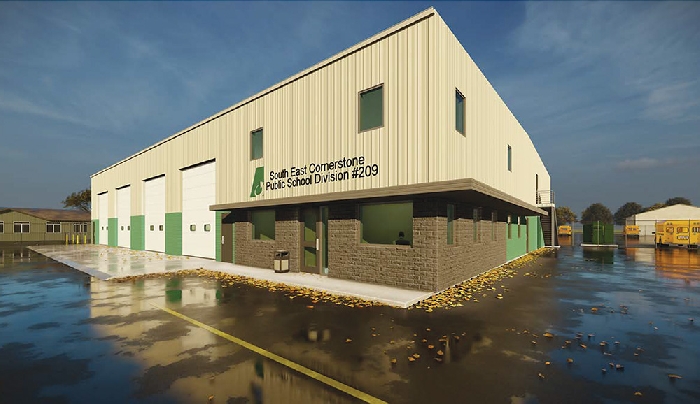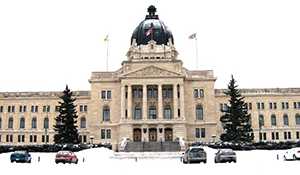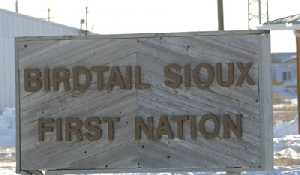Southeast Cornerstone School Division: McNaughton proposal part of budget discussions
February 21, 2020, 11:16 am
Kevin Weedmark


A proposal for renovations at Moosomin’s McNaughton High School has been developed by staff and students and has been presented to the Southeast Cornerstone School Division administration.
The World-Spectator interviewed Director of Education Lynn Little last week on the proposal.
The full interview follows:
Can you explain at this point, is the proposal being looked at by the administration, or has it gone to the board for review? Where is the proposal at right now?
The students and the staff prepared and presented the proposal to enhance their practical applied arts programming. Their proposal also included possible cost sharing, so those are some pieces that come into play and we will look at going forward. As the budget is being prepared right now, we’re waiting to hear from the provincial government what we will receive on budget day in the middle of March. As that budget is being prepared we’re considering all the pieces and projects that will apply to our PMR funding, which is Preventative Maintenance and Renewal funding. That’s funding that is allocated in each budget year that we must use for ongoing maintenance and improvements in school systems.
So this would be considered within that Preventative Maintenance and Renewal budget as opposed to the capital budget for a larger project, which would require provincial government approval?
Absolutely, that is exactly right. In our current budget year we received about $2.7 million for these purposes and we are required to develop a three-year plan within that. That plan often gets adjusted as time goes along because something will happen to a facility that we need to adjust—perhaps a furnace might go down or a roof might need repair or whatever it happens to be—so there are some of those unknowns that always come in, but there are other things that we know and can plan for—decommissioning of spaces, for example. We have our roofing now on cycles that we can work through plumbing systems, hvac systems, but along with that we are then able to look at improvements within schools that would be considered smaller renovations which McNaughton’s request would fit within.
PAA (Practical and Applied Arts) spaces are a pretty common request right now, science labs are pretty common, but we are getting (requests for) upgrades to some of our libraries, occasionally band rooms, so we study all of those requests and proposals and we weigh what is needed, what is at the end of life, and of course what will enhance programing. So in McNaughton’s case it certainly appears it would enhance the programing for them and the structure of their school and the flow of their programing, and so it will fit into that piece.
So where does the proposal go from here?
We are doing pre work for the budget pla, so we’ve got our PMR plan that we’ve had in place that is kind of a rolling plan. We do have this proposal in with all of the other pieces that we have received both previously and currently and they are all being weighed. So it is at the administration level right now as we are setting those budgets internally.
The board is aware of the request. I was actually just at a board meeting yesterday. Andy (Dobson, Manager of Facilities and Transportation) gave his report on facilities and transportation in his annual report and it was within that as well.
What is on your three-year plan right now? Is it similar projects to this?
There certainly are some roofing projects. Initially when we first received the PMR funding we had a lot of roofs across our system that required repair and really the bulk of it went towards that. We now will continually have some roofing upgrades that we need to do over time—there is always a roof or two up there. There is some hvac systems that are on there as we are working through, and now you’ll see pieces like this one. Upgrades of PAA kitchens and science labs tend to be the type of things that we are seeing.
The actual capital dollars are a little bit different. Each year each school division can submit up to three requests for major capital. That decision that is made at the province where all of the school divisions and all of the buildings are put into the mix and there is multi-year provincial component based on the condition of the building.
Is the difference between a PMR project and a capital project strictly the dollar value? If you were to add a portable for half a million dollars, is that a capital project or a PMR?
That’s a third process. There is a process for portables. If there is linkage that is required for the portable, which for example at McLeod you have saw where there will be a portable, but there is a hallway that is required to connect. That linkage piece comes out of our PMR. So if we apply for a portable and receive a portable for a school, then the linkage comes of out of the PMR dollars.
But there is funding that comes for the portable separately, and then capital is for major renovations and new builds and so in our system. We put in just yesterday the motion that will go to the government that there is a Feb. 28 deadline for the submission and so we have for about the fifth or sixth year in a row requested a new pre-K-12 facility in Carlyle and submitted for a upgrade renovation to ECS (Estevan Comprehensive School) in Estevan along with partners, City of Estevan, City Police and some joint pieces there as that building is capacity challenged as it’s at only about 53 percent capacity of students, so we need to address all the additional space that is there. We also have put in for a joint project with Holy Family School Division for an elementary build in Estevan, so those are long term, long range projects and it comes through a different process.
Oxbow opened about nine or 10 years ago and Weyburn Comp. was a renovation that was done through those larger capital dollars, and that was a partnership with the City of Weyburn and Southeast College and the new elementary school here in town that hopefully is right on track to be opening in September of 2021. Four schools will be closed and decommissioned then. Weyburn Junior High has already been demolished and the new school has gone up on its site, but both Haig and Souris school and Queen Elizabeth School will all be closing as well. Souris was built in 1910 and Haig in 1920. In those buildings we were unable to make them into accessible buildings just given their structure.
All those components come into play when the province looks at who is going to move forward with capital projects. Those capital dollars are a different process than our PMR. PMR is much more nimble. We are able to make those decisions at the school division level, exactly where they ought to be made. We really appreciate that we receive funding for that, and that we are able to determine how to use that.
Is the Carlyle K-12 school a capacity issue?
Carlyle elementary has a capacity issue as well as structurally it’s getting to that age, and Gordon F. Kells as well, so it would be a closing of two schools into one new school. When you look at the cost of not necessarily upgrading but upkeeping older buildings over time versus the cost of a new build, it becomes more economical, but the challenge of course for the province is that that is the case province-wide.


A few years ago the town council was talking about the need to renew McNaughton High School as enrolment is projected to keep rising, and they were told the only way the province would ever look at putting money into any project is if a school was over 120 percent capacity. Is that different in the Estevan case, or was that inaccurate?
It’s accurate depending on what is required or what the situation is. There are a number of different components within that. The first component is health and safety. If there is a building and it’s submitted that there is a structural foundation problem that is extreme—and that can of course happen at any given time, like if a tornado comes through or whatever in Saskatchewan—that of course takes precedence.
But then there are all these components that come into play. In Saskatoon and Regina where growth is an issue, there are good schools but they reach capacity and then the question is where to put the students. They will begin to consider new builds once it is over capacity.
In the case of Estevan Comp, it’s a case of looking at the building and recognizing that the shops require upgrading and the whole building requires upgrading but in order to upgrade that building and to receive capital dollars for that—because there are so few students in it in comparison to what it was built for—that wouldn’t be funded. The government wouldn’t say ‘well yeah let’s go ahead and fix that building as is.’
In that particular one, because it’s a comprehensive school with all of the different shops and the programs, if that is an important piece to the community—and they said yes and we’ve had those for a number of years and we appreciate them—those were comps that were built as centennial builds actually (around 1967) and they’re across the province.
So we look at, in order to keep those, what do we need to do to address the fact that there is a shortage of students in the building, and so you move more students in, that’s a piece, you decommission space if that’s the case, you connect with other partners and bring them in so that they might be using a part of the building. Just to get an upgrade for that building and not to change anything else or bring partners in. Carol (Flynn, the trustee for the Moosomin area) is exactly right. That would not receive funding and support, nor should it, quite frankly.
What is the situation with Estevan—has there been a significant decline in enrolment or did it never reach the capacity it was built for?
It never ever did reach the capacity it was built for. For a period of time, Southeast College came in and used a portion of that building, but then they built an energy institute a few years back, so when they moved out again that then left space in the building, but to my knowledge it never did reach what they expected it to reach. It was built for a little over 1,400 students.
What is enrolment there now?
Right now there are about 730 students and that is lower than it used to be. For several years it was about 900. So it has gone down a bit, that’s for sure, we are seeing that trend. It looks to be about stable that number. Unless we change some things and change the grade structure in there. So that is why there are studies being done on that.
In a case like Estevan specifically, with a big question mark over what’s happening after 2030 with the coal mine and the power plants, does that come into the planning? Have you looked at what might happen in different scenarios with enrollment down the road?
Absolutely. We look at our proposed projected enrollment and it is hard to know 10 years out, but we’ve got pretty accurate projections in all our communities moving forward and so absolutely that is a concern.
So will it ever get to 1,400 students or 1,000 students? Our projections are saying no. That’s why we’re saying we need to do something, because that is a very large building. Also the facilities within it, the cost of keeping a building that is so large with few students in it, that is expensive for our system and so we are looking at being more efficient with our spaces, hence some of the work there.
Regarding the McNaughton proposal, is there a certain timeline that the division would be determining what will be in the budget and what would be in that three-year plan going forward?
Yes, that will be a part of the budget process we will go through and the board will approve by the end of June. Tweet



































